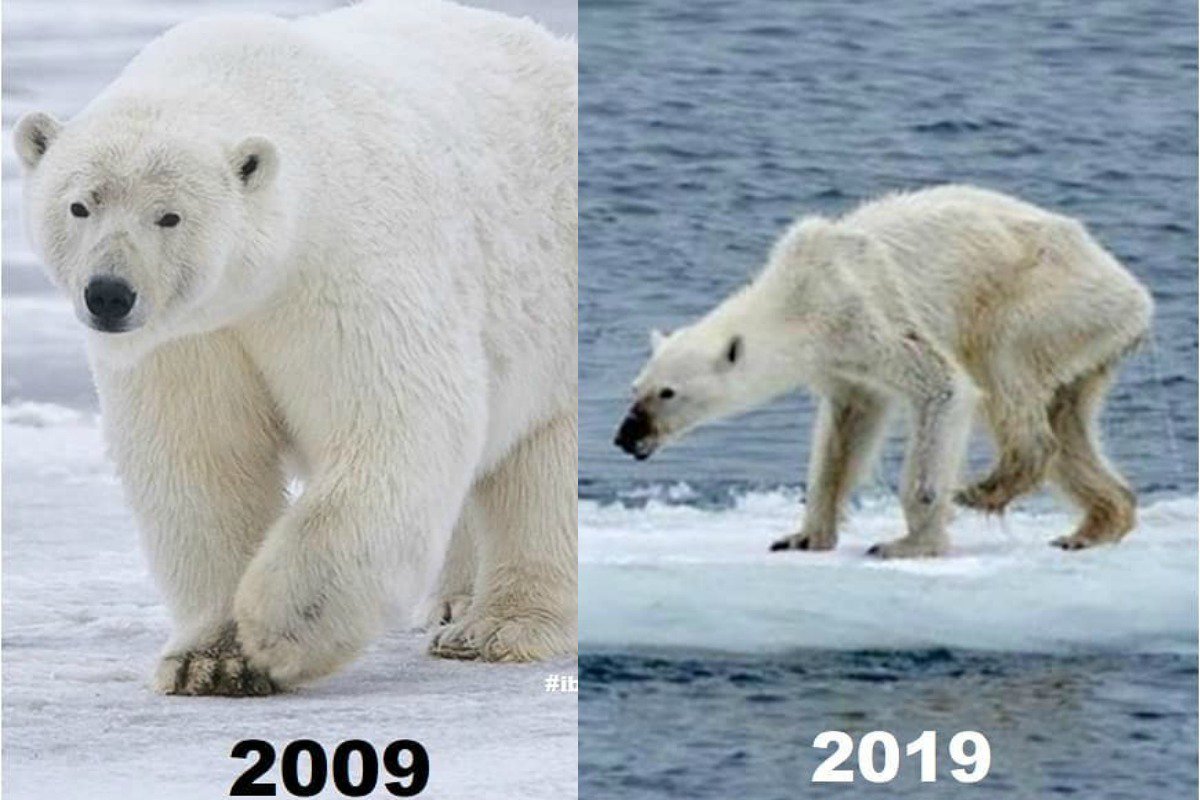The popular 2019 social media trend “The 10 years challenge” allows participants to post a picture of themselves ten years ago and then post a picture of themselves now to see how much they have changed over the years. But recently, a more disturbing light has been shed on the challenge and people have been using it to talk about climate change. One of the more popular photos that were posted was about the starving polar bears. The very unsettling image has caused people to start talking about how climate change is affecting the polar bear population and how that will change in another decade.
“I think that showing the [environmental] reality of the 10-year challenge is the best way we can involve young people in more drastic causes on things that our government isn’t taking care of,” said sophomore Tenzin Faulkner.
Sophomore Oscar Upshaw agrees with Faulkers statement that the youth might not be aware of the effects of climate change.
“I feel like it brings more light to the subject. climate change is a big issue and there are not a lot of people who know about it,” said Upshaw.
According to National Geographic, It is estimated that from the years 1981 to 2010 about 770,000 square miles of ice were lost due to climate change, which is a larger surface area than both Alaska and California combined. Climate change is affecting the Arctic more than anywhere else and scientists estimate that 14% of sea ice is shrinking per decade. Polar bears rely on small cone-shaped breathing holes in sea ice to aid them in catching seals, their main food source. The small cone-shaped holes allow them to use a form of hunting called still-hunting, meaning they stay in one place for an extended period of time. they could end up waiting hours for a seal to come by. Polar bears use this technique in order to minimize how much energy they use, and after a study done by ecopsychologist Anthony Pagano, scientists now have a better understanding of just how much energy polar bears use. Pagano’s study revealed that polar bears use 60% more energy than anyone had expected. Despite sitting around most of the time, polar bears burn through about 12,325 calories per day. It was found that polar bears have extremely high metabolisms which allow them to digest their food much faster. Consequently, with the melting of ice, polar bears have found it harder to get the food they need, and due to the combination of not eating and moving around more often in order to find food, they have become thinner and physically weaker according to LiveScience.
In Pagano’s study, he captured nine female bears, fitted them with GPS collars and collected blood and urine samples. After 11 days passed, he captured the female bears again and tested their blood and urine once more along with looking at the footage from the GPS collar. The data showed that over the 11-day period the female bears were only active about 35% of the time and yet they burned 12,325 calories a day. The video footage revealed 4 out of the 9 females weren’t able to catch a single seal and consequently lost up to 44 pounds, including lean muscle, in only 11 days. As the ice continues to melt, the polar bears are forced to migrate to land where they can’t find seals, walruses or whales, and slowly starve to death. In the polar bear’s effort to find more food, they are only moving more than their bodies are made for and are slowly starving themselves. Their body is using the only source of energy it can find and consequently feeds off of its own fat, which leads to weight loss.
National Geographic calculated that there is currently a global population of 25,000 polar bears. Scientists estimate that if humans don’t start making a movement towards decreasing their carbon footprint and improving the climate not only polar bears will be affected but our oceans coral reefs and many other species around the world. The clock is ticking; time is running out to reverse the damage we have caused. Will the world get its act together before it’s too late?
-By Reese Cantrell



